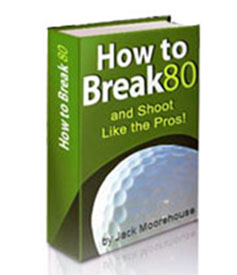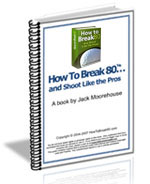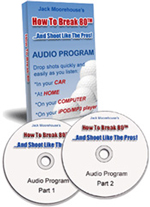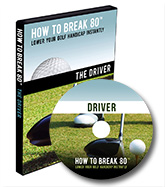Stan Utley’s Unique and
Simplified Chipping and Putting Methods
By
Jack Moorehouse
Stan
Utley wants to transform your short game. Who’s Stan Utley? He’s not a local pro
who gives golf lessons or writes golf tips. He’s a former PGA Player and a short
game guru with unique ideas on putting and chipping. He’s worked with several
PGA golfers and helped enhance their short games—and their purses— noticeably,
making you wonder if he hasn’t caught on to something that could really cut a
player’s golf handicap.
Utley’s
main point, as I explain in my golf lessons, is that a chip shot—or a putt—isn’t
fundamentally different from a full shot, and the changes he recommends are not
without foundation. They’re effective golf principals applied to the short game
in a new way. Put another way, his adjustments are simple, proven fundamentals
that have withstood the test of time. He just applies them to the short game.
Let’s examine his approach.
Chip It Closer
The key
to chipping, Utley teaches, is letting the clubhead do the work, not your arms.
On a chip shot, most golfers take a pitching wedge and line up open with the
ball way back in their stance. They bring the club back straight along the
target line with an all arms move and make a steep chopping swing designed to
leave the ball within a foot or two of the hole—the classic text book golf
lesson on chipping.
Utley,
however, encourages a different approach. He teaches players to set up square to
the target line and take a narrower stance than normal, with the ball forward
under the left eye and more weight on the front foot. He teaches players to
rotate their forearms, fold their right elbow back (right-handers), and make a
very small pivot, which he says, places the clubhead on a natural plane. And he
teaches players to let the club’s shaft hang down on a shallow angle while using
the same overlapping grip employed on full shots.
If all this sounds familiar,
it should. You’ve probably heard it somewhere else. Or maybe you’ve read it in
one of my golf tips. That’s because it details the way you would normally hit a
full shot with a 7-iron or a 5-iron, instead of a chip shot with a pitching
wedge. Hitting a chip shot under his system, then, is no different than hitting
any other shot, except the stroke is shorter and more compact. That’s part of
the lure of Utley’s system. You’re not doing anything different than you
normally would, just applying the principals to the short game.
Draining More Putts
Utley’s
putting approach is also unique. He makes changes not only to the grip and
stroke, but also to ball position and forearm alignment—all of which sounds
strange but seem to be effective.
Utley
teaches players to place the hands in a natural position, relative to the way
their arms hang down, and to grip the putter almost exclusively with their
fingertips, generating better feel and control. If they putt right-handed, this
means their left hand will be in a weak position, rather than a strong one and
their right hand will be in a strong position, rather than a weak one.
Utley
also teaches players to re-align their forearms. If they’re right handed and
they line up with their shoulders, hips, and feet square to the target, their
forearms are actually pointing left of target. Eventually, they’ll do something
consciously or unconsciously to compensate for the misalignment. With Utley’s
system, they take a normal putting stance but they line up their forearms square
to the hole, eliminating the need to compensate for the misalignment, position
the ball under their front eye, and narrow their stance.
In
addition, he teaches a putting stroke that replicates a full swing. His
in-to-out-to-in approach—instead of back and forth stroke—provides solid contact
at impact and requires less effort to make a 20-foot putt, he says. While this
stroke seems to open up the putterhead just before impact, that’s just an
illusion. The putterhead is actually staying on the curved path.
Since
putting requires stability and control, Utley favors a reverse overlapping grip,
with the putter’s shaft running up the hands’ lifelines, making it easier to
keep the putter on plane, according to Utley. And since he believes that the
putting shaft should be leaning forward at impact, he also favors more loft on
the putter than the standard 3 or 4 degrees.
Utley’s approach to chipping and putting is unique. And it’s not something
you’ll hear in a typical golf instruction session, but it’s worked for several
PGA pros. After working with Utley, Jay Haas won $2.6 million in prize money,
Craig Stadler coasted to victory at the 2004 B.C Open, and Peter Jacobsen took
the Greater Hartford Open. While their short games weren’t the only factors in
their victories, their successes make you wonder if Utley hasn’t caught on to
something good.
Jack
Moorehouse is the author of the best-selling book “How
To Break 80 And Shoot Like The Pros.” He is NOT a golf pro, rather a
working man that has helped thousands of golfers from all seven continents lower
their handicap immediately. He has a free weekly newsletter with the latest
golf tips, golf lessons and
golf instruction. |
Tools To
Help Your Game!

eBook

Physical Book

Audio Program

Short Game DVD

Driver DVD
|